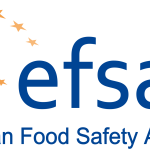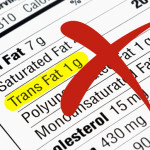Is breast milk dangerous for human consumption?
Expert puts Codex Alimentarius Commission’s food labeling paper
about trans fats and saturated fats in proper perspective
 Is mother’s milk dangerous for babies? While it may seem absurd, this question and others are cropping up in response to a food labeling paper released by the Codex Alimentarius Commission (CAC). If its recommendations are accepted, healthy food sources in countries around the globe may soon wear warning labels. “It would be impossible to follow what they recommend,” comments Roger Clemens, DrPH, CFS, CNS, FIFT, FACN, FIAFST. Clemens served on the USDA 2010 Dietary Guidelines Advisory Committee with primary responsibilities in food safety, and dietary lipids and health.
Is mother’s milk dangerous for babies? While it may seem absurd, this question and others are cropping up in response to a food labeling paper released by the Codex Alimentarius Commission (CAC). If its recommendations are accepted, healthy food sources in countries around the globe may soon wear warning labels. “It would be impossible to follow what they recommend,” comments Roger Clemens, DrPH, CFS, CNS, FIFT, FACN, FIAFST. Clemens served on the USDA 2010 Dietary Guidelines Advisory Committee with primary responsibilities in food safety, and dietary lipids and health.
Saturated fats, such as those found in palm oil, are now considered to be part of a healthy diet. Several studies among humans indicate red palm oil, consumed by millions around the world, may be particularly healthful. The CAC’s saturated fats recommendations could therefore have far-reaching implications.
What is the CAC?
The Food & Drug Administration sets policy for approximately 324 million Americans. With few exceptions, the rest of the world relies on the CAC, an intergovernmental body established by the Food and Agriculture Organization of the United Nations and the World Health Organization. Its purpose is to protect the health of consumers and ensure fair practices in the food trade.
Recommended trans fat and saturated fat labeling guidelines
Based on the assumption that all trans fatty acids (TFAs) and saturated fats increase cardiovascular disease risks, the CAC is proposing that foods labeled as “TFA-free” can contain no more than 1 gram of TFAs per 100 grams of fat. Products claiming to be TFA-free must also get no more than 10% of their calories from saturated fat.
“This paper fails to differentiate between naturally occurring trans fats and those created through the hydrogenation process,” Clemens points out. “Breast milk contains naturally occurring trans fats. More than 50 percent of its calories come from fat with approximately 30 percent coming from saturated fat. If these naturally occurring fats are truly bad for us, tell that to mother nature! Saturated fat is the primary energy source for babies.” He adds, “We can’t blindly accept these recommendations. We need proper perspective.”
What else went wrong?
Clemens points out that the recommendations appear to rely on outdated science and incomplete analytical data. “Some of the numbers appear to be based on current detectable levels rather than what is clinically relevant,” he points out. “Clinical trials on natural versus industry TFA sources have found significant differences in their effect on cardiovascular disease risk factors. This shouldn’t be ignored.”
Clemens elaborates with these points concerning TFAs and saturated fats:
- TFAs are naturally occurring in dairy products and mother’s milk. In everyday practice, it would be impossible to achieve classic toxic TFA levels from these healthy sources.
- On page 10 of the report, CAC does give some analytical data but fails to identify whether they are using industrial or natural (ruminant) TFAs. Without that, how can we accurately assess the data?
- TFAs are a minor factor in cardiovascular disease. Genetics and lifestyle are much bigger issues.
- The only true atherogenic saturated fatty acids in our diets, and which humans make naturally, are myristic acid and palmitic acid. Their greatest effects have been shown in rabbits, and questionably in humans. Different types of saturated fatty acids also have different effects relative to heart health and health in general. It is important to remember that humans make the saturated fatty acid palmitic and in fact, this fatty acid is a precursor to many fat-like substances which are needed in the human body for optimum metabolism and health.
- The food industry has already largely reduced TFAs. But the data show a diet of 35% to 40% energy from fat may be healthful. Low-fat diets, less than 30% of calories, have been largely shown to be ineffective at lowering chronic disease risks.
- “Free of TFAs” would be dietary mistake. You would delete all dairy products, because the CAC does not differentiate the forms of TFAs. Dairy brings rich nutrition to people around the world, including underserved populations.
He refers to a recent U.S. News & World Report article by K. Aleisha Fetters, which cited research supporting full-fat diets as being healthier. “She got it right. People around the globe still need to learn about current and dynamic nutritional science. Healthful saturated fats, such as those found in olive oil, palm oil, avocados and some nuts, are associated with weight loss, lower diabetes risk and decreased risk of heart disease. We must remember that it’s the amount and frequency of consumption that separate the differences between healthful and unhealthful dietary patterns that contribute to human health.”
Clemens concludes that, “If something was truly a risk factor, I would jump on it. But extensive reviews and meta-analyses have called into question much of what many assumed to be consistent and true about saturated fat, trans fats and our health. In fact, not all saturated and trans fatty acids fit the perceived “unhealthful” mold. And if we were to try to follow the CAC’s labeling recommendations, it would be both impossible and unnecessary.”
For additional information about current scientific research on saturated fats, visit www.PalmOilHealth.org.
Article Credit:
Dr. Clemens is adjunct Professor of Pharmacology and Pharmaceutical Sciences within the USC School of Pharmacy, International Center for Regulatory Science. He served on the USDA 2010 Dietary Guidelines Advisory Committee with primary responsibilities in food safety, and dietary lipids and health. He has been cited and interviewed by more than 500 domestic and international health journalists’ discussions on contemporary health, nutrition and food safety issues.










Leave a Reply